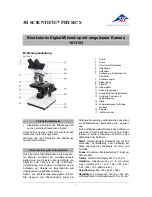
Safety Practices and Hazards
Agilent Cary 600 Series FTIR Spectrometers and Microscopes User’s Guide
11
Consult the manuals supplied with your computer, monitor and
printer for their specific voltage requirements.
Replace blown fuses with fuses of the size and rating as stipulated in
the text adjacent to the fuse holder or in the manuals where listed.
Do NOT use power cords with faulty or frayed insulation.
CAUTION
Use of controls or adjustments or performance of procedures other than those
specified in this manual, may result in hazardous radiation exposure.
Laser safety
The Agilent Cary 600 Series FTIR spectrometers use a helium-neon
laser operating in the visible region at 632.8 nanometers. The
spectrometer is a Class 2 laser product, powerful enough to warrant
caution in its use. Agilent Cary 600 Series FTIR spectrometers and
microscopes comply with FDA and CE standards for light emitting
products.
An attenuated portion of the laser beam passes into and through the
spectrometer sample compartment. Although not powerful enough to
harm your skin should your hand intercept it, the laser light could
cause retinal (eye) damage during prolonged direct viewing. This is
not possible given the normal optical layout of the spectrometer.
However, if a highly reflective surface such as a mirror is allowed to
intercept the beam, the beam could be redirected out of the sample
compartment resulting in on-axis or direct viewing. Care must be
taken to avoid this.
The laser in the spectrometer is operating when the green power
indicator of the spectrometer is active. The Agilent Cary 600 Series
FTIR spectrometers incorporate an interlock switch that
automatically turns off power to the laser if the interferometer
compartment cover is opened.
No maintenance of the spectrometer or microscope by users is
required to maintain specifications, proper operation, and
compliance with FDA and CE standards for light-emitting products.












































